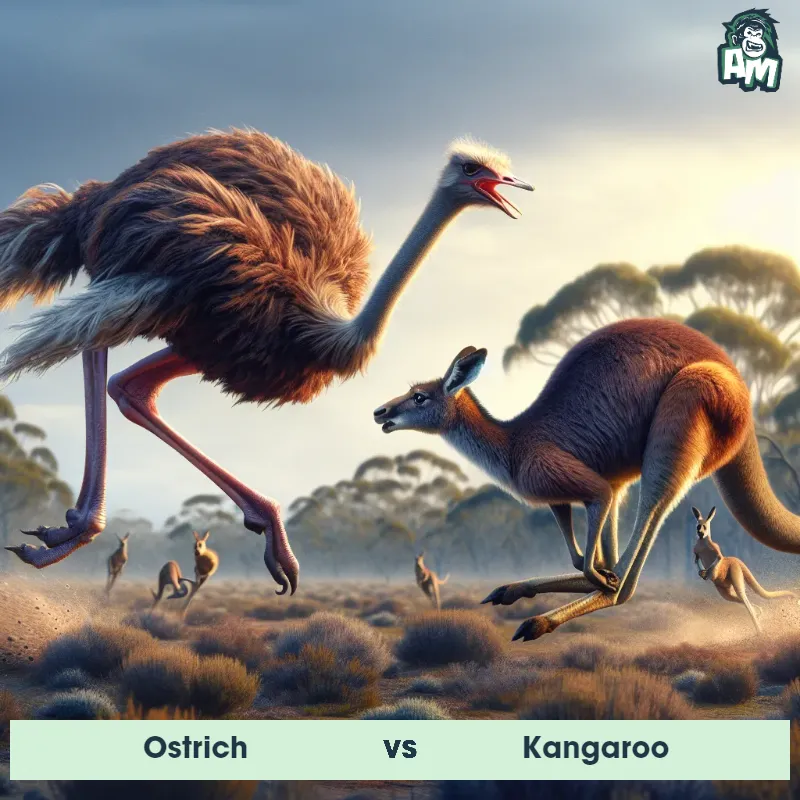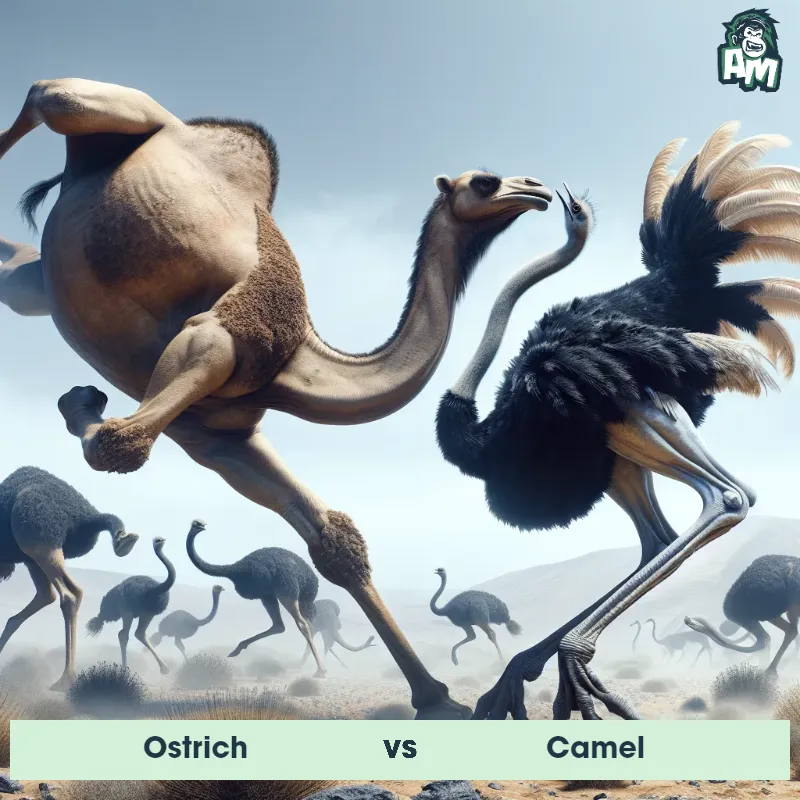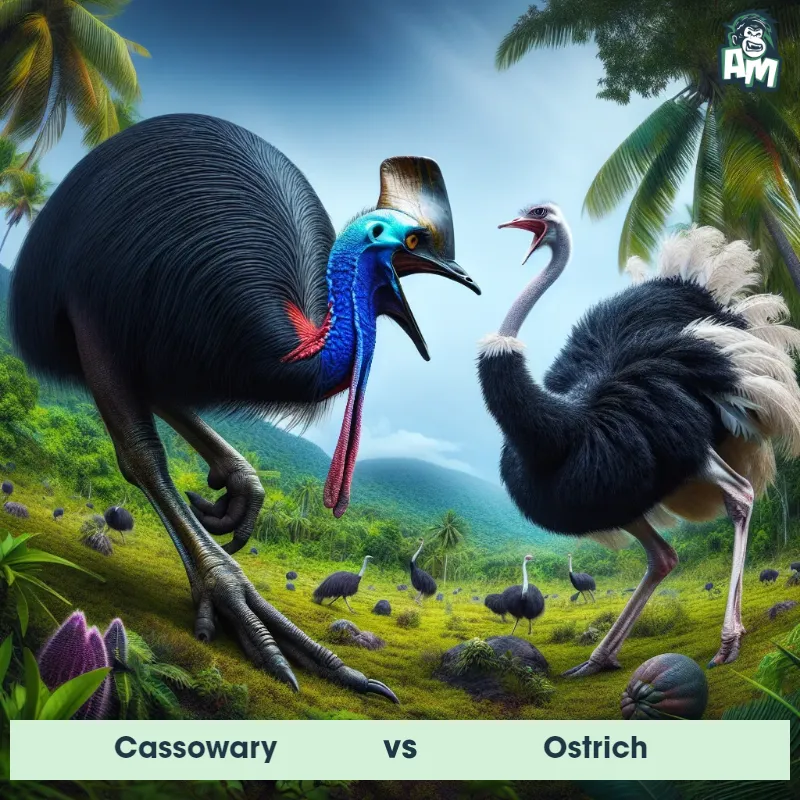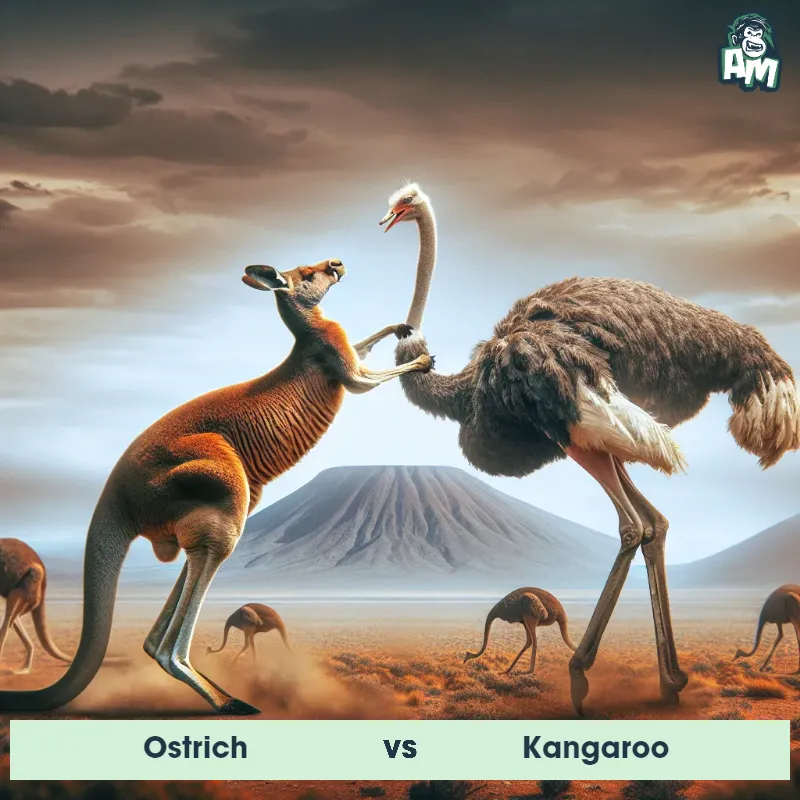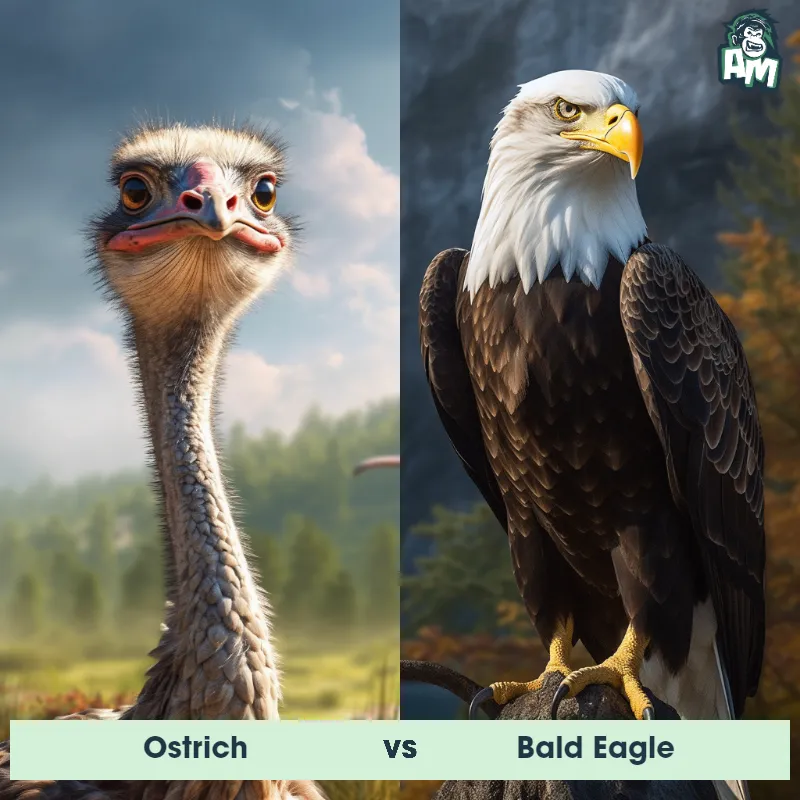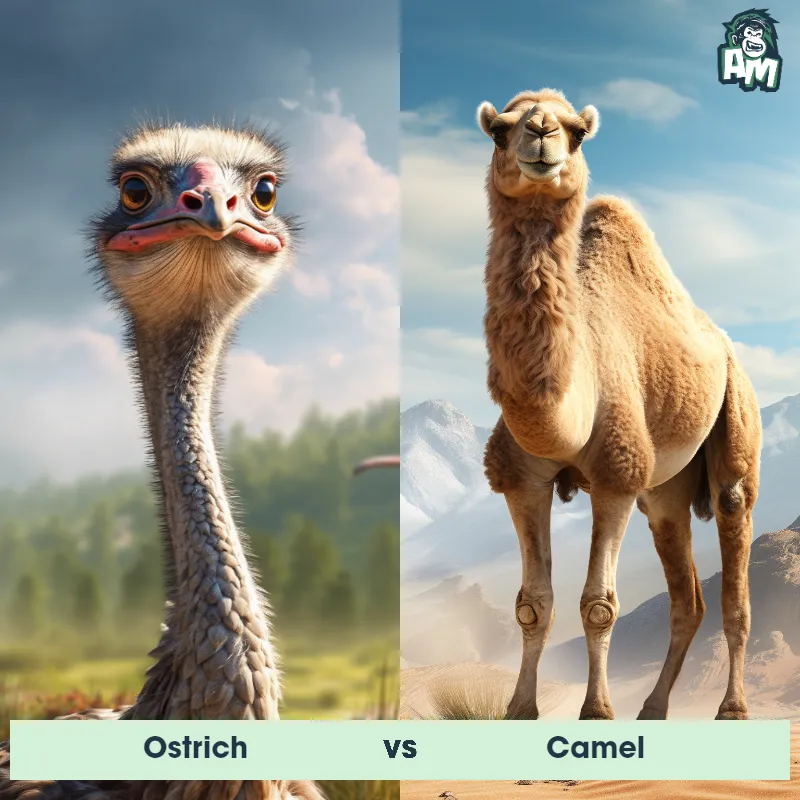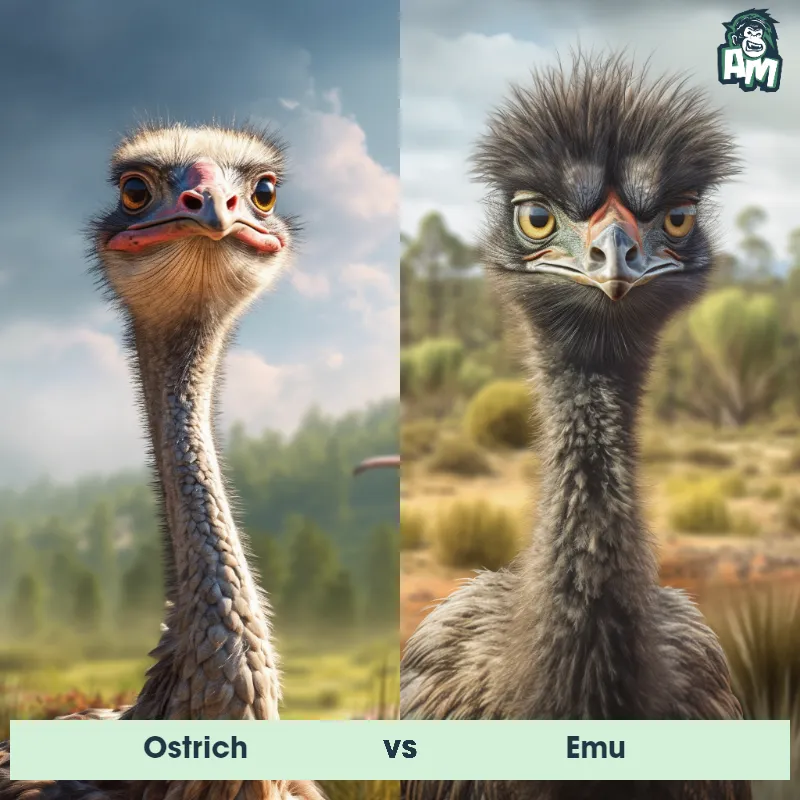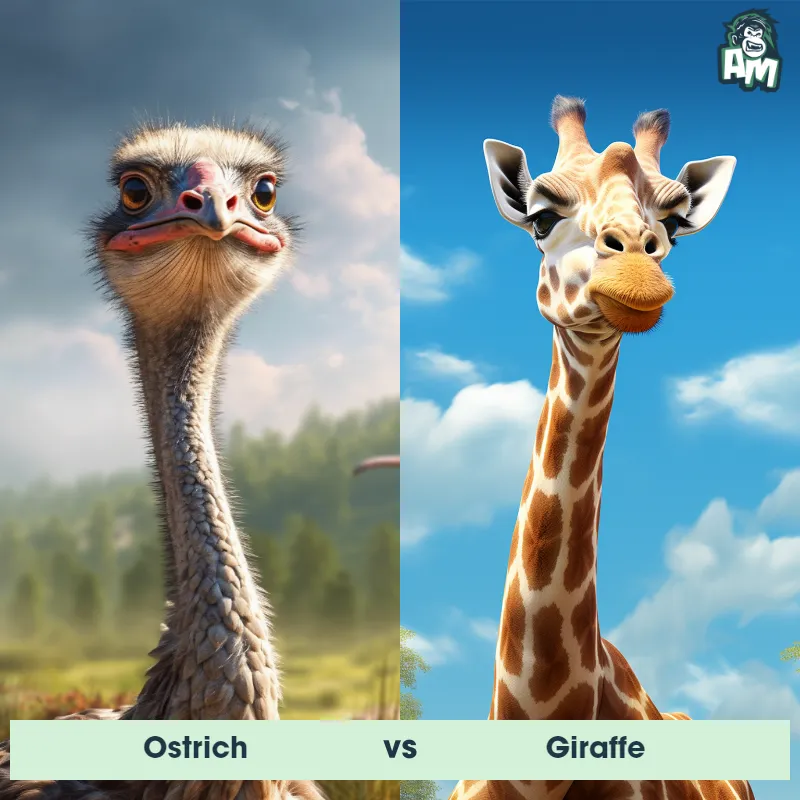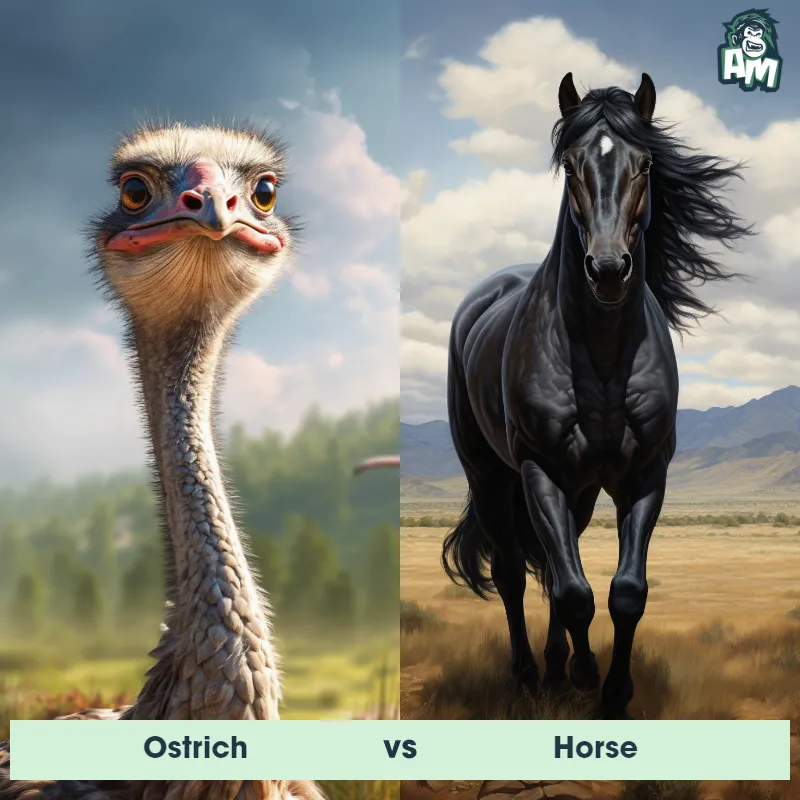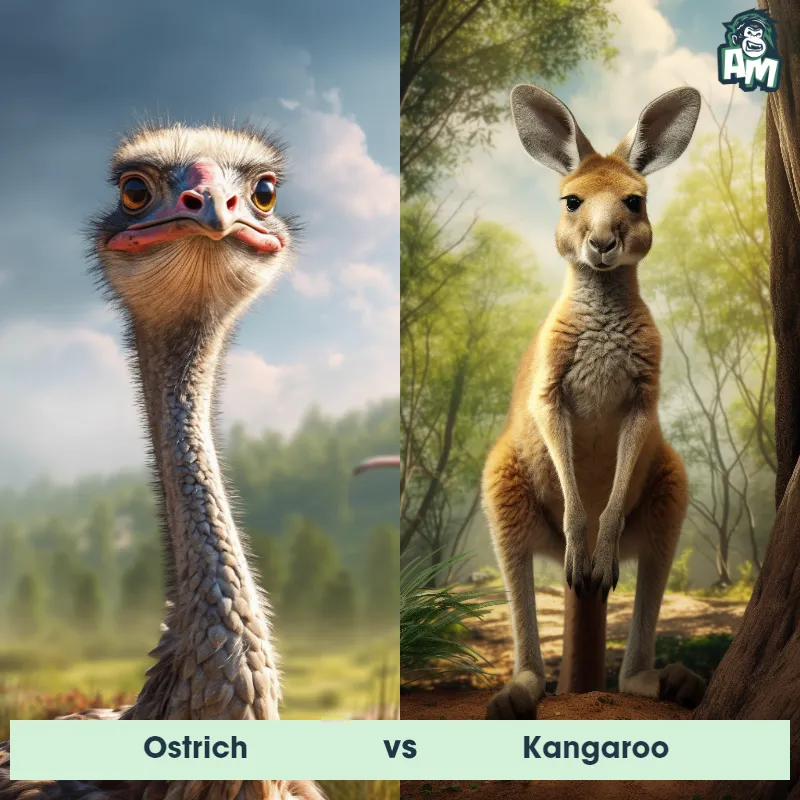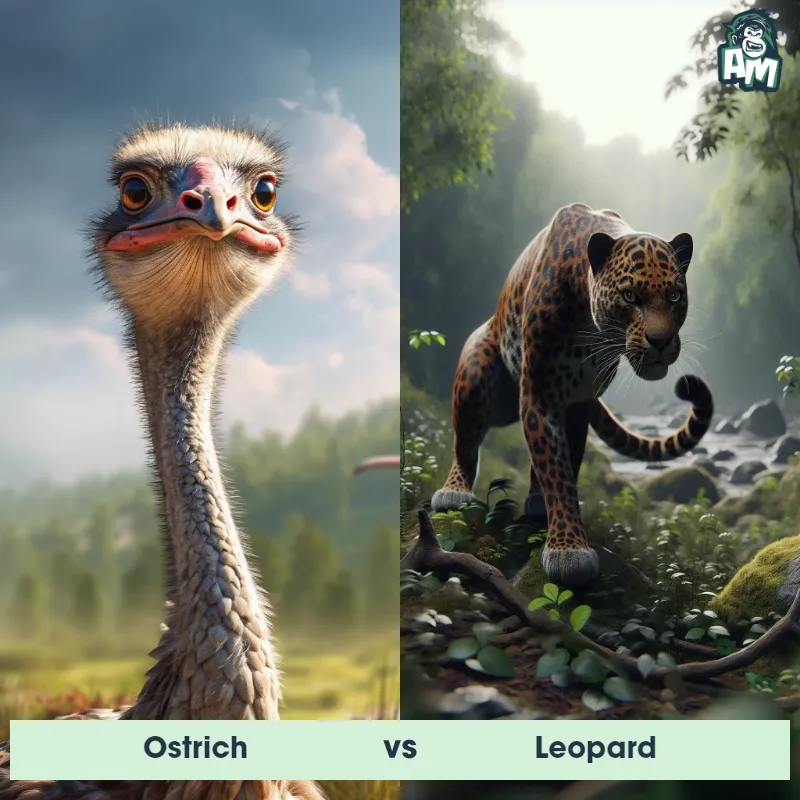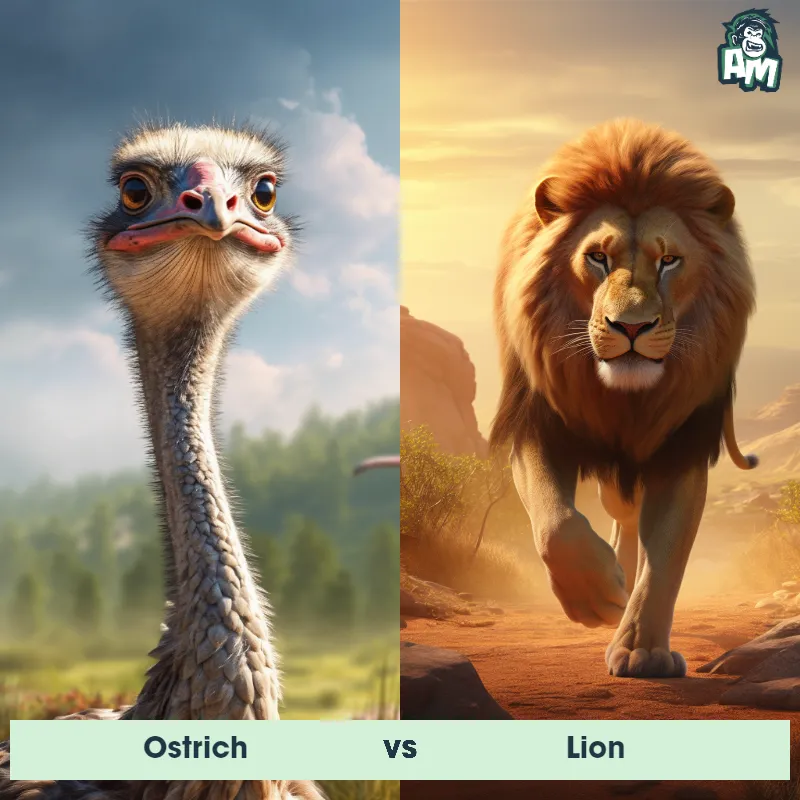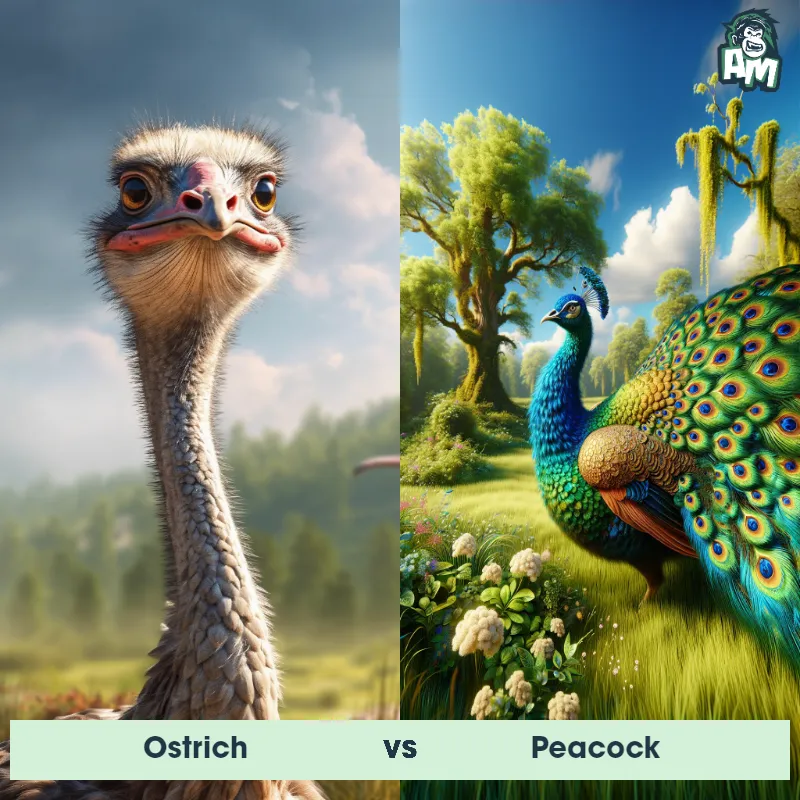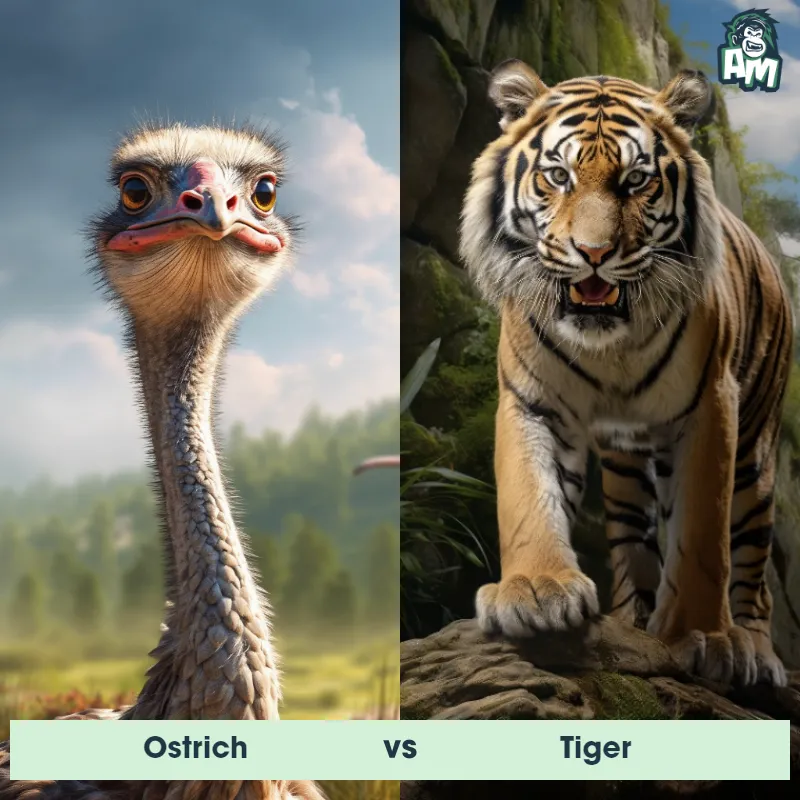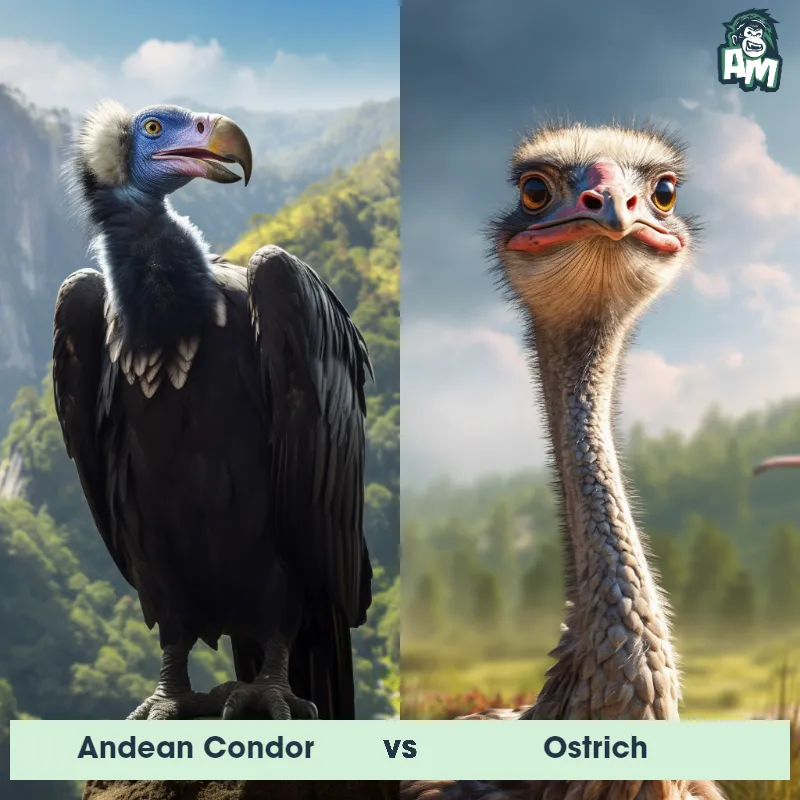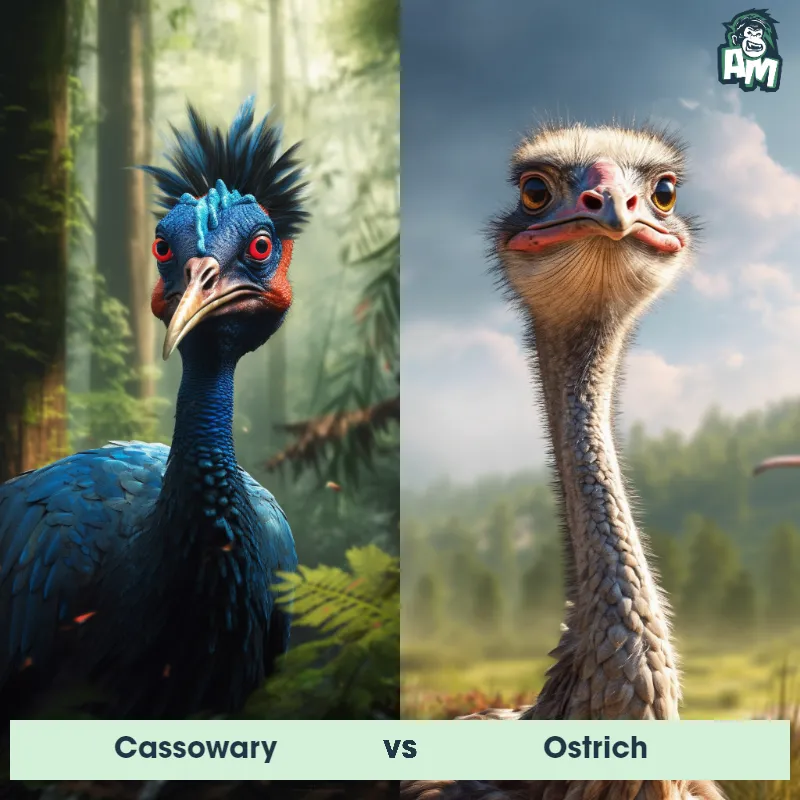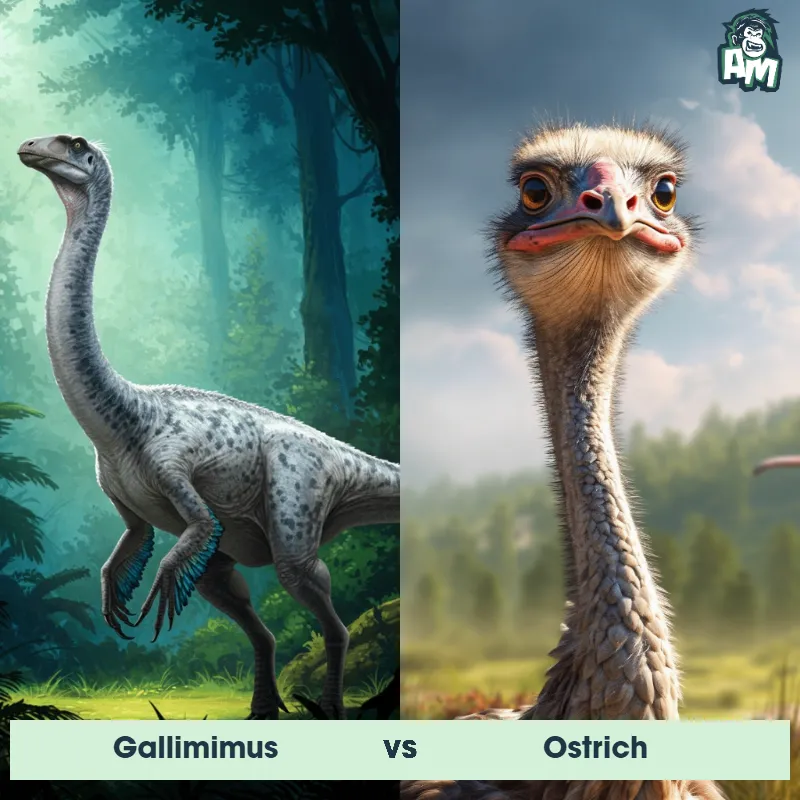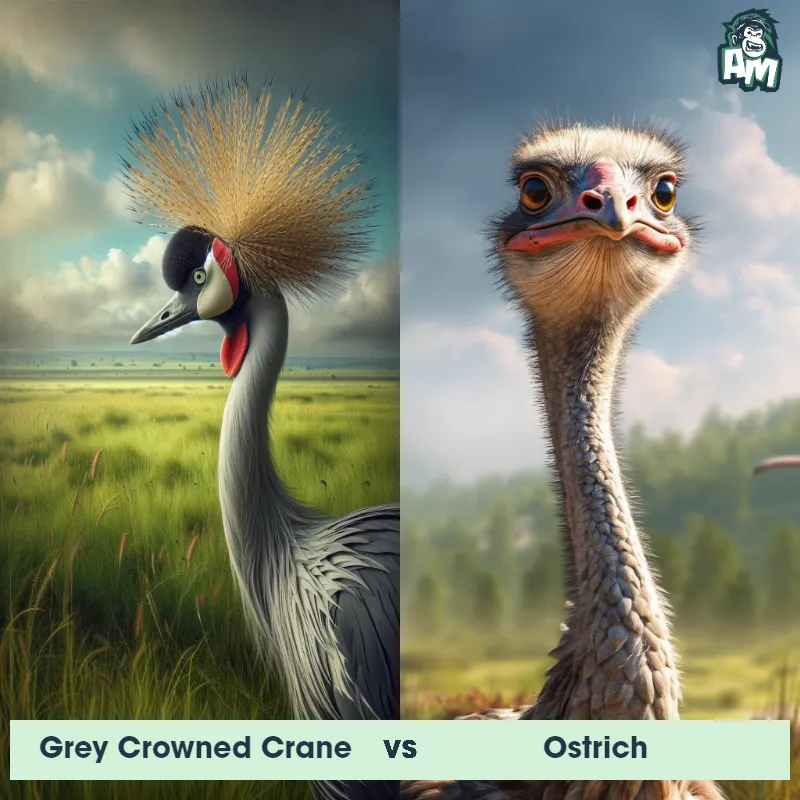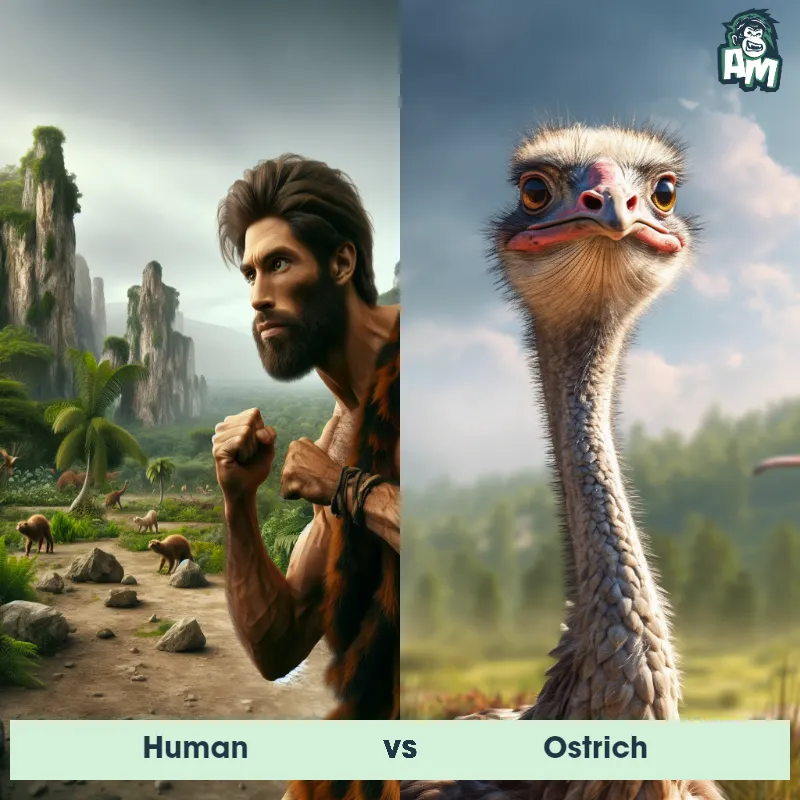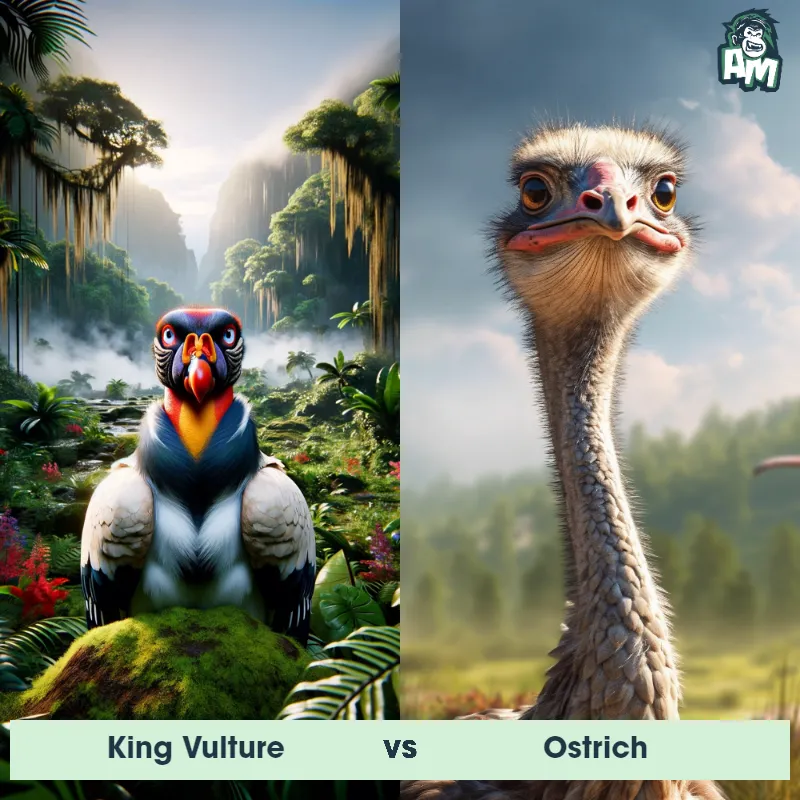The Ostrich
The Ostrich is the largest living bird on Earth and is native to the African continent. It has a distinctive long neck, long legs, and a large, round body covered in soft, grayish-brown feathers. Ostriches are flightless birds with strong legs that allow them to run at speeds of up to 60 miles per hour. These birds also have powerful beaks, large eyes, and can reach a height of 9 feet tall, making them impressive creatures.
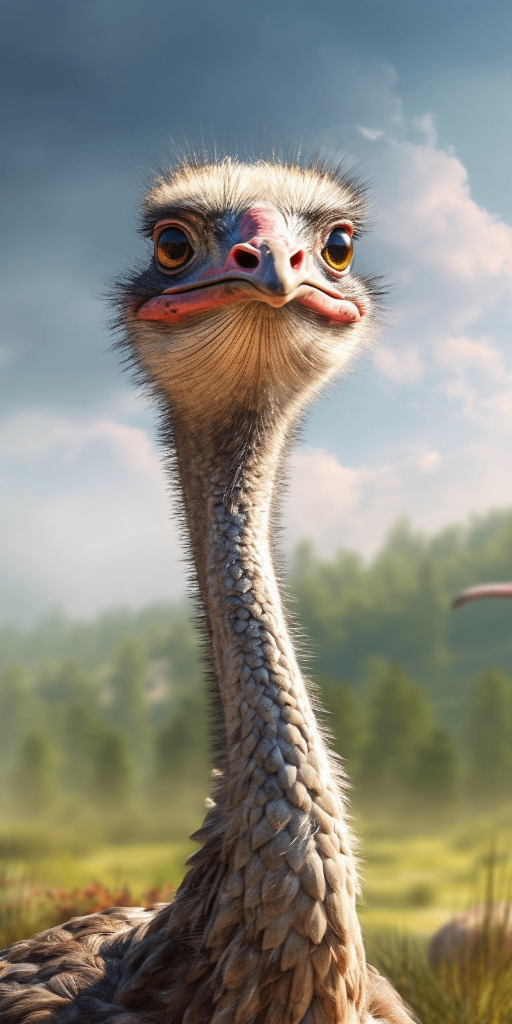
| Ostrich | |
|---|---|
| Size | Up to 9 feet tall (2.7 meters) |
| Weight | Up to 320 pounds (145 kilograms) |
| Speed | Speed: 43 mph (69 km/hr) |
| Key Strength | Powerful legs for kicking |
| Biggest Weakness | Flightless |
| Scientific Name | Struthio camelus |
| Family | Struthionidae |
| Habitat | Grasslands and savannas |
| Geography | Africa |
| Diet | Omnivorous, primarily plants and insects |
| Lifespan | 40 years - 50 years |

The Ostrich
The Ostrich is the largest living bird on Earth and is native to the African continent. It has a distinctive long neck, long legs, and a large, round body covered in soft, grayish-brown feathers. Ostriches are flightless birds with strong legs that allow them to run at speeds of up to 60 miles per hour. These birds also have powerful beaks, large eyes, and can reach a height of 9 feet tall, making them impressive creatures.
Fun Fact: Ostriches have the largest eyes of any land animal, measuring about two inches in diameter, and allowing them to have excellent eyesight, particularly over long distances.
| Ostrich | |
|---|---|
| Size | Up to 9 feet tall (2.7 meters) |
| Weight | Up to 320 pounds (145 kilograms) |
| Speed | Speed: 43 mph (69 km/hr) |
| Key Strength | Powerful legs for kicking |
| Biggest Weakness | Flightless |
| Scientific Name | Struthio camelus |
| Family | Struthionidae |
| Habitat | Grasslands and savannas |
| Geography | Africa |
| Diet | Omnivorous, primarily plants and insects |
| Lifespan | 40 years - 50 years |
Match Highlights
Ostrich Matchups
We use AI to simulate matchups between the Ostrich and other animals. Our simulation considers size, strength, and natural predatory behaviors to determine the most likely outcome.

Can't find the Matchup you want?
Create Your Own MatchupOstrich: Diet, Predators, Aggression, and Defensive Behaviors
What do Ostriches eat?
Ostriches are omnivores and have a diverse diet that includes plants, roots, seeds, fruits, insects, and small animals. They mainly feed on grasses, leaves, and seeds, but they will also consume small vertebrates like lizards and insects when the opportunity arises.
Do Ostriches have any predators?
Yes, Ostriches have several predators in the wild, including lions, leopards, cheetahs, and hyenas. These predators typically target young or weak Ostriches, as adult Ostriches are extremely fast runners and can use their powerful legs to defend themselves.
Are Ostriches aggressive?
Ostriches are known to be territorial and can exhibit aggressive behavior, especially during mating season or when they feel threatened. They may charge, kick, or use their sharp claws to defend themselves or establish dominance within their group.
Do Ostriches fight?
Male Ostriches are known to engage in fights during the breeding season to compete for mates and establish dominance within the group. These fights can be intense and may involve kicking, pecking, and pushing between rival males.
How do Ostriches defend themselves?
Ostriches have several defense mechanisms to protect themselves from predators, including their incredible speed and agility. When threatened, they can run at speeds of up to 45 miles per hour and use their powerful legs to kick or stomp on predators. Ostriches may also use their wings as a form of defense or distraction.
What is the biggest weakness of Ostriches in a fight?
Despite their impressive speed and powerful legs, Ostriches have a relatively small brain size compared to their body mass. This means that they may not always make the best decisions in a fight and can be outsmarted by more cunning predators. Additionally, their large size and flightless nature make them vulnerable to ambush attacks from predators like lions or cheetahs.
Fun Fact: Despite having small wings and being flightless, ostriches can use their wings to change direction quickly while running, giving them enhanced maneuverability and agility.
Fun Fact: Ostriches have unique digestive systems that allow them to consume a wide range of food, including plants, insects, small reptiles, and even rocks and pebbles, which help them grind food in their gizzard.



